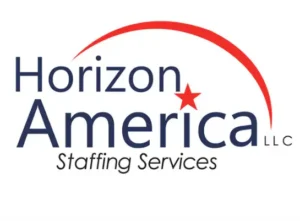Compensation packages and benefits are still considered the most important factors when employees accept a job offer. The question is, are salary packages enough to keep your employees? Surprisingly, this may not always be the case! In this article, we’ll discuss the importance of career growth in increasing retention and advancing your workforce’s professional goals.
Why Salary Is Not Enough to Keep Top Talent
While salary and benefits greatly impact job acceptance, they may not be enough for retention. In fact, the lack of a development plan is one of the primary reasons employees leave a company, almost at par with low salaries, according to the Pew Research Center.¹ Many employees today seek professional development in their careers. They’re not just working to earn a paycheck.
Aside from these, employees today look for fulfillment at work in various ways. Some might value a positive work culture, flexibility, autonomy, and recognition. Others look for transparency, upskilling opportunities, or overall well-being. Regardless of what employees seek, it’s important to provide a holistic approach to employment to ensure loyalty and productivity.
What Employers Can Learn from the Great Resignation
Just a few years ago, the Great Resignation disrupted the world of work. However, the pandemic wasn’t completely the cause of this phenomenon; it only magnified existing concerns. Here’s the breakdown:
1. Demographic shifts impact workforce participation.
Baby boomers exiting the workforce represented one of the primary factors that amplified the Great Resignation. Although the economy experienced significant disruption during the pandemic, it rebounded relatively quickly. Workers returned to onsite positions, while work-from-home opportunities remained available throughout the crisis.
The contrast with previous economic downturns is revealing. During the 2008 Great Recession, many older workers had to postpone retirement and continue working due to financial necessity. However, by 2021, the booming stock market, combined with fears about COVID-19 exposure, enabled and encouraged many baby boomers to exit the job market permanently.
Statistical comparisons highlight this shift clearly: workforce participation increased by 1 percent during the 2008 recession but decreased by 1.9 percent in 2021. These numbers demonstrate that a significant portion of the workforce prioritizes overall well-being and will choose earlier retirement when financially feasible.
2. Employers must adapt to employees’ resistance to relocation.
Let’s face it—job hunting used to mean following the opportunities to big cities. But these days, more and more people are choosing to stay put in their hometowns. In fact, 2021 saw the lowest relocation rates in 70 years!²
One of the main reasons is the rising costs of purchasing a house or renting a unit. While big cities still have plenty of jobs, many workers simply don’t think the lifestyle is worth the price tag. With interest rates climbing, moving has become even less appealing.
Another reason is the increasing demand for remote work. Before the pandemic, remote jobs were already becoming popular. When COVID-19 struck, it was only a matter of time before the gig economy dominated the industry. With this new opportunity, many employees look for jobs in the comfort of their homes instead of relocating.
3. Companies need to address poor work conditions.
Burnout has always been a significant issue in the workplace, especially for frontline workers working for longer hours. Before the pandemic, the job market was experiencing 33 million resignations in 2015, which increased to 31 million in 2019.³ When the pandemic hit, the numbers grew and reached a record-high 50 million in 2022, the peak of the Great Resignation.⁴
It’s important to understand that the pandemic didn’t cause these job departures—it simply accelerated an existing trend. The health crisis prompted many employees to reassess their priorities, especially those facing higher COVID-19 exposure risks.
This shift in perspective motivated workers to seek better opportunities elsewhere. However, the data clearly shows that increasing numbers of people were already leaving their jobs before the pandemic, pointing to deeper workplace issues that employers must confront.
Read more: Reducing Absenteeism with Temporary Staffing Solutions: A Guide for Industrial Employers
4. Organizations can retain talent with clear career paths and better compensation.
High-performing professionals consistently seek clear and reliable career advancement paths. Unfortunately, many workers settle for whatever positions they can find due to financial constraints or limited opportunities. The Harvard Business Review confirms that the Great Resignation was significantly driven by employees’ pursuit of better-paying jobs and more positive work environments.⁵
This pattern of job-switching occurs both within industries and across different sectors. The trend is particularly pronounced in lower-wage fields like retail, warehousing, transportation, and healthcare, where job dissatisfaction, inadequate compensation, and unfavorable working conditions are common.
While the Great Resignation highlighted these issues, data reveals that these industries already experienced high quit rates before the pandemic began, indicating longstanding problems with employee retention that organizations must address.
The Key to Employee Retention: Career Growth
The data shows that many workers were searching for better opportunities even before the Great Resignation. Encouraging employees to remain would be much easier if the conditions were more attractive, and one of the great retention strategies today is supporting career growth.
So, what can employers do to support employee career paths?
Create Career Development Plans
Supporting your employees’ career goals is crucial. It allows them to advance their professional lives and achieve better salaries. This means career planning at the beginning of their work with you. You can provide them with:
- Clear career pathways, including what they need to accomplish and learn.
- Learning opportunities like safety training to enhance employee safety.
- Mentorship programs and career coaching to guide them.
- Upskilling opportunities that help them stay relevant in their industry.
Invest in Technology Training
Since many workers consider looking for opportunities even outside their industry, it might be beneficial to provide them with career advancement opportunities that could help them become more valuable in today’s job market.
For example, many skills can be transferred to technology, like quality control, process optimization, or supply chain management. Instead of hiring qualified employees who already know how to utilize modern technologies, take the time to train your employees. This can provide them with strong career growth and development. Furthermore, this can address the growing skill gaps, especially in the light industrial sector.
Focus on Soft Skills and Leadership
Offering leadership training and focusing on soft skills are invaluable components of one’s career development. Not only does it provide them with a solid career progression, but it also makes them better employees.
When workers know how to communicate or show initiative, they become more active contributors at work. This can significantly improve the workplace. It helps enhance productivity, minimize conflicts, and improve team cohesion. Overall, it fosters a strong workplace that works toward the same goal.
Similarly, leadership skills can provide significant career growth, allowing them to take over managerial roles or more responsibilities. There’s a chance they’ll seek leadership opportunities in other companies. However, focusing on an employee’s career development shows commitment to career growth. Chances are, they’ll be more likely to stay as loyal employees.
Read more: How to Make the Most of Temp Workers—And Get Them to Stay
Encourage Continuous Growth and Learning
Professional development is not always about providing career growth opportunities for employees. Instead, you can foster an environment that supports growth throughout their work journey.
Autonomy
You can start by providing autonomy and ownership to employees. Let them take charge of their work and be accountable in their respective areas. While mistakes can happen, use them as an opportunity for employees to learn and improve their craft. As much as possible, try not to lean on their missteps.
Recognition
On the other hand, you can provide encouragement and recognition to those who excel. Use various channels like email, newsletters, or chat groups to tap someone’s back. Even a short chat over a cup of coffee can significantly encourage your employee.
Read more: Critical Safety Training Every Temporary Industrial Worker Needs on Day One
Partner with Horizon America and tap into our staffing services.
In today’s competitive work landscape, people seek job fulfillment in their careers in addition to a competitive paycheck. They need to know whether their career can grow within an organization and if that organization supports their goals. This is where offering professional growth opportunities becomes crucial.
At Horizon America, we provide exceptional candidates who are positioned to succeed within your organization. If you’re looking for skilled workers in the industrial sector, our professional network of talented employees can help you find the right fit to meet your business needs.
We have also created a downloadable salary guide that discusses the key industrial trends and salary insights for the light industry.
Our goal is to fulfill yours. Be Horizon America’s partner today.
References
- Parker, Kim and Horowitz, Juliana Menasce. “Majority of workers who quit a job in 2021 cite low pay, no opportunities for advancement, feeling disrespected.” Pew Research Center, 9 Mar. 2022, https://www.pewresearch.org/short-reads/2022/03/09/majority-of-workers-who-quit-a-job-in-2021-cite-low-pay-no-opportunities-for-advancement-feeling-disrespected/
- “During pandemic’s first year, Americans moved at the lowest rate in over 70 years, new census data shows.” The Washington Post, 17 Nov. 2021, https://www.washingtonpost.com/dc-md-va/2021/11/17/us-migration-pandemic-census/
- “Job Openings and Labor Turnover Survey News Release.” US BLS, 17 Mar. 2020, https://www.bls.gov/news.release/archives/jolts_03172020.htm
- “Annual quits levels by industry and region, not seasonally adjusted.” US BLS, 11 Mar. 2025, https://www.bls.gov/news.release/jolts.t21.htm
- Fuller, Joseph and Kerr, William. “The Great Resignation Didn’t Start with the Pandemic.” 23 Mar. 2022, https://hbr.org/2022/03/the-great-resignation-didnt-start-with-the-pandemic



